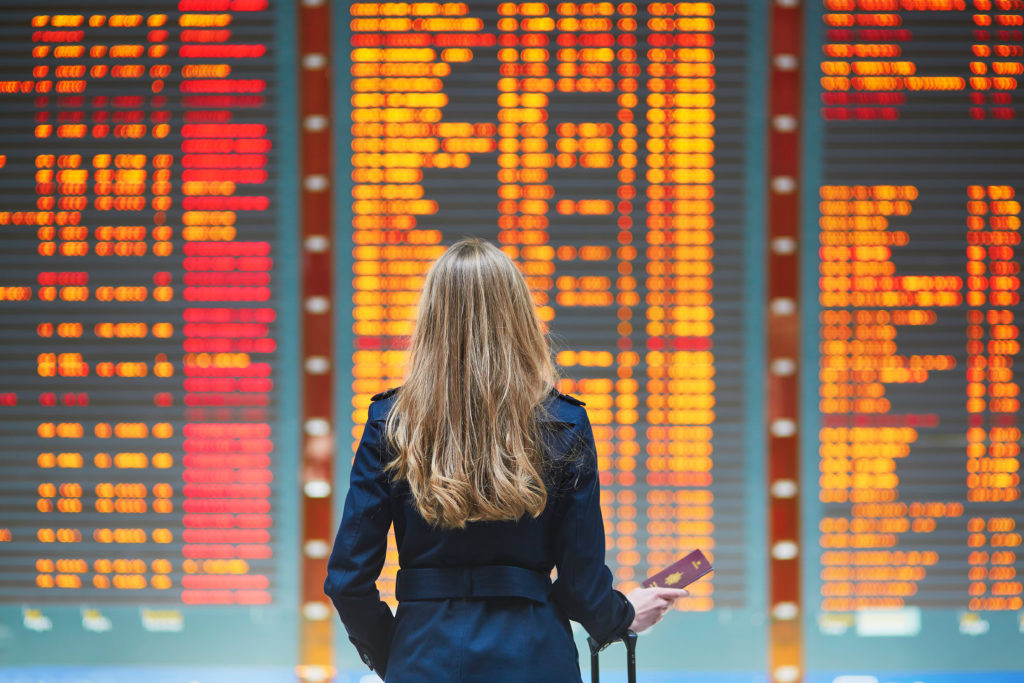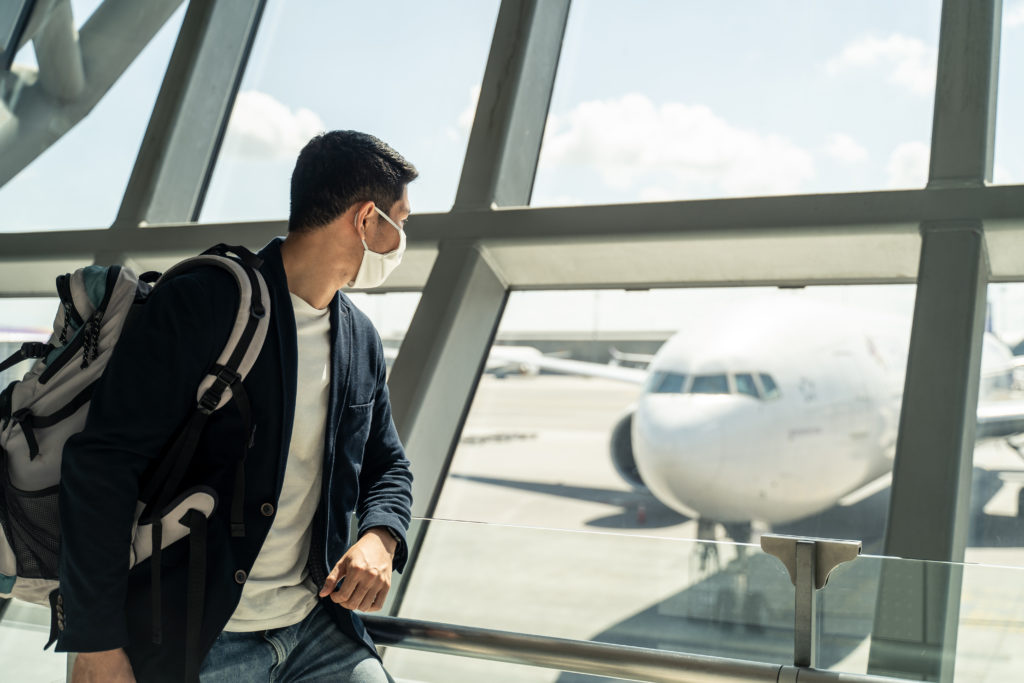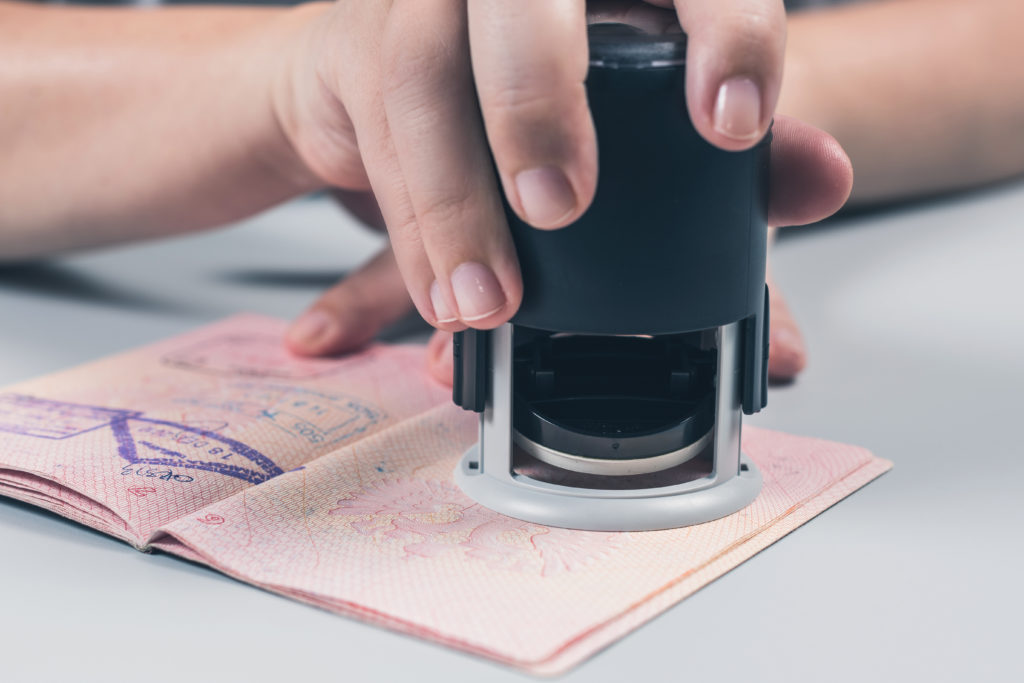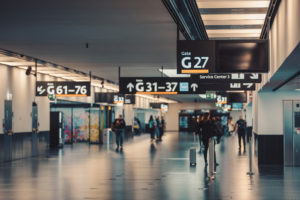There's no doubt that you typically need to arrive at the airport earlier for an international flight than you do for domestic travel. Sure, if everything goes smoothly, the difference is minimal but it’s always best to plan for the unexpected. When you add in immigration checks—and health protocols due to Covid-19—there are more steps involved which could add to the time it takes to get from terminal entrance to your gate if there are any hiccups along the way.
Airlines often recommend arriving at the airport three hours before scheduled departure for international flights. Ask a frequent flyer and they’ll likely tell you that this is too early while extra cautious travelers may prefer to pad that time even more. Since the actual time needed to go through check-In, security screening, and passport control can vary quite a bit depending on the airport, destination, time of day, etc., airlines tend to give the three hour advice to be on the safe side.
Traveling from the U.S. to an International Destination

When flying on an international itinerary from the U.S., the minimum check-in time is usually one hour before departure but you’ll want to verify exact times with your airline. This applies even if you are flying on a domestic connecting flight before your international flight if it is on the same itinerary. The airline will want to check your international travel documents before your first departure, which is why they require the extra time.
Of course, the cut-off time means you’ll need to be at the front of the line with any checked bags and have your documents verified by this time. You can sometimes check-in online when departing from U.S. airports which can help expedite this process, but if the airline needs to see your passport in person or verify any required COVID-19 documentation, you’ll likely have to complete check-in in-person at the airport.
Since everyone on your flight will likely need to show COVID-19 documentation which can result in long lines, it’s best to arrive early at the airport for an international flight in 2021.
With TSA PreCheck
If you have TSA PreCheck, are familiar with the procedures at your airport, have checked-in online, and don’t have any checked bags, you can usually be ok arriving at the airport 90 minutes before departure. But with the need to verify COVID-19 vaccine and/or negative test results, it would be best to give yourself a little extra time and arrive at least 2 hours before departure.
Keep in mind that not all airports and airlines participate in TSA PreCheck, and that TSA PreCheck is not guaranteed every time you fly, even if you have a membership. Check your ticket to confirm you have received TSA PreCheck before deciding on a time to leave for the airport. Click here to see a list of airlines that participate in TSA PreCheck, and here for a list of airports.
Related: Global Entry vs. TSA PreCheck: Which Is Better?
Without TSA PreCheck
For those without TSA PreCheck you may want to add some extra time to go through security screening and arrive at the airport 2.5-3 hours early for international flights. You won’t need to go through any border control before departing the U.S., so in this sense, it should take you the same amount of time to reach your gate once you’ve cleared security as it would for a domestic flight.
Large Airports
If you have to navigate a large airport, like New York (JFK), Atlanta (ATL), or Chicago (ORD), take that extra time into consideration as well. And if the country you are traveling to has more stringent entry requirements due to COVID-19, such as specific tests or forms required, you’ll want to arrive even earlier as the agents at the airport may need more time to verify these specific documents. Plan to be at your departure gate 45 min. to an hour before departure or risk losing your seat.
Related: 5 Ways to Get Into Airport Lounges for Free
Traveling from an International Location to the U.S.

One major thing to keep in mind when departing from an international airport is that TSA PreCheck will not be available for expedited security screening. Unless you’re traveling in First or Business Class, you’ll be stuck in the general security line, which can take shorter or longer than you’re used to depending on the country and airport.
Also, while you may be used to being able to check-in online and proceeding directly to security upon arrival at the airport, it’s more likely you’ll have to check-in in-person when traveling from an international location back to the U.S.
Extra Security and Proof of Negative COVID-19 Test
When traveling to the U.S. from abroad you will be subject to enhanced security checks. This means you may be required to pass through two security checkpoints; one general checkpoint, and another either at the gate or before a series of gates dedicated to U.S.-bound flights. And with the added requirement to show proof of a negative COVID-19 test taken within 72 hours of your U.S.-bound flight’s departure, regardless of vaccination status, you’ll want to plan on being at the airport at least 2.5-3 hours early.
Exit Immigration
Keep in mind, most countries will require you to go through passport control and receive an exit stamp when you are traveling on an international flight. This is different from how it works when you depart the U.S. so be prepared to go through passport control after you clear security. Depending on the flight schedule at the airport you’re flying from and the efficiency of the staff, this could be a lengthy process.
Preclearance
If you happen to be flying from one of the few preclearance airports around the world, you’ll be clearing U.S. customs and immigration before your flight’s departure. This means you’ll need to arrive at the airport even earlier, but also be able to walk right out of the airport or directly to your connecting flight when you arrive in the U.S. The following countries/regions and airports participate in the preclearance program.
- Canada: Calgary (YYC), Edmonton (YEG), Halifax (YHZ), Montreal (YUL), Ottawa (YOW), Toronto (YYZ), Vancouver (YVR), Victoria (YYJ), Winnipeg (YWG)
- Caribbean: Freeport (FPO), Nassau (NAS), Bermuda (BDA), Aruba (AUA)
- Ireland: Dublin (DUB), Shannon (SNN)
- United Arab Emirates: Abu Dhabi (AUH)
Some airlines suggest arriving up to four hours early when departing from Ireland or the UAE to ensure enough time to clear U.S. customs and immigration before departure. This may seem ridiculously early, but if you haven’t flown in a while, you may want to heed to the advice of the airline. In fact, Etihad states that check-in for U.S.-bound flights departing from Abu Dhabi closes two hours before departure and you must be at the US Customs and Border Protection facility no later than 60 minutes prior to departure.
Related: Where Can Americans Travel Right Now?
Traveling Between Two International Locations

Finally, if you’re traveling between two international locations, you’ll want to pay close attention to what steps you’ll need to follow before your flight’s departure. If it’s a domestic flight, it will likely be similar or even an easier experience than when flying domestically within the U.S. but this varies widely around the world.
If it’s an international flight, you’ll want to know if passport control will be required. This can be somewhat confusing when flying around Europe. Become familiar with the 26 countries that comprise the Schengen Area. Flights within the Schengen Area will not require passport control but you may still have to go through health protocols and COVID-19 document checks. Sometimes, you may be able to upload your documents during online check-in. Other times, you may need to present them along with your passport at the check-in counter.
If you’re flying between a Schengen country and a non-Schengen country, you’ll need to go through passport control before boarding your flight. For instance, if you’re traveling from Spain (Schengen) to Montenegro (non-Schengen), there will be a passport checkpoint after security screening and before you get to your departure gate. For these types of flights, I would generally recommend arriving at least two hours early. For long-haul international flights, the general recommendation of three hours early is pretty standard.
Related: 11 Best Airlines for Nervous Flyers
Better to be Safe than Sorry
Personally, I don’t like arriving at the airport too early. I generally know what to expect when flying internationally and often arrive just in time to complete the necessary checks, grab a quick bite from the lounge and head to the gate. However, this has come back to haunt me. Recently, when flying from Barcelona to Montenegro, I experienced a much slower security screening process than I’m used to and a passport control line that moved slower than a snail. Needless to say, my general standard of arriving at the airport 90 minutes before departure was not early enough to complete these steps and I missed my flight.
Bottom line, airport checkpoints are taking longer than they have in the past with all of the new COVID-19 protocols and reduced staffing at airports worldwide. For this reason, it would be best to err on the side of caution. Consider that one of the steps may take longer than expected and arrive at the airport earlier than you may have in the past.
For international flights, I would plan to arrive a minimum of two hours early. Depending on the airport and specifics relating to your flight, you may even want to arrive up to four hours early. After all, it’s better to be safe than sorry.






